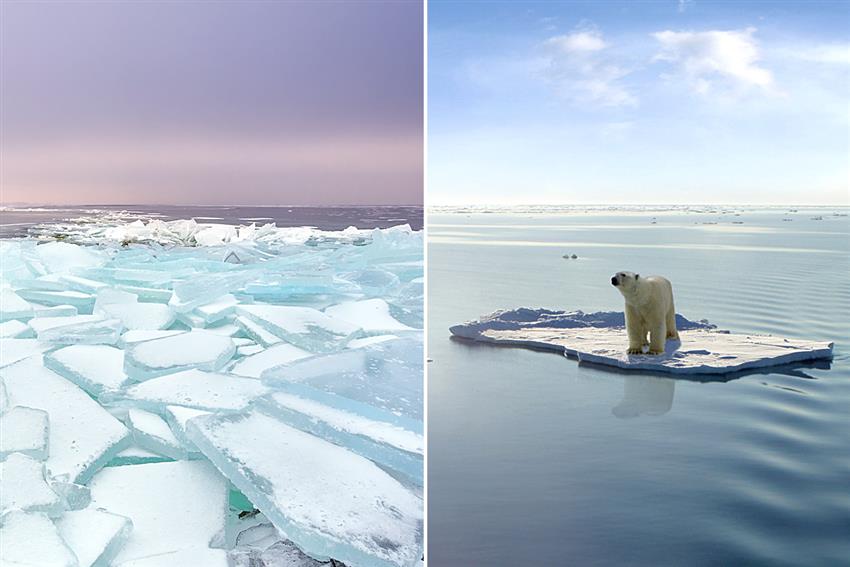
There is a social media meme at the moment where two photos are posted side by side, one from 2009 the other from 2019. ‘Bonus points’ are apparently gained by ‘featuring’ a similar pose in both photos. As everything is apparently better with a hashtag, this latest fad is tagged as the #10yearchallenge.
While social media has only been ‘a thing’ for about 10 years, why stop there? If we look back 30 years ago to 1 January 1989, all 197 countries of the world implemented the Montreal Protocol which effectively bans the use of chemicals that adversely affect the ozone layer above the earth. The agreement was signed in 1987. Australia’s Department of Environment and Energy has a detailed description of what the ozone layer is and why it is important
here, but for the purposes of a political blogsite, the effects of a reduction in the ozone layer around the world would allow significant additional levels of UV light to reach the earth affecting plant crops, food production, our climate and our ability to survive outdoors. As
The Guardian recently
reported
Governments temporarily put aside cold-war hostilities and united rapidly around a solution to the ozone problem. From the first research in 1973, it took just 16 years for the world to discuss, agree and put in place a solution that reversed the trend.
The Guardian goes on to compare the relatively quick action on the elimination of ozone layer damaging chemicals to the world’s lack of action on climate change.
By comparison, scientific warnings that carbon dioxide emissions could disrupt the climate date back to at least 1962 (and the risks were speculated on much earlier). Yet despite numerous international agreements on the subject since then (Rio 1992, Kyoto 1998, Copenhagen 2009, Paris 2015), emissions are still climbing.
While there was clear scientific evidence that the ozone layer was diminishing there is also clear evidence in the increase in high temperatures, inconsistent rainfall, changes to native fauna and increasingly more powerful cyclones, that climate change is a reality in
Australia and elsewhere. Increasing droughts and even more frigid winters around the world demonstrate on a daily basis that the climate is changing to a far greater extent than can be supported by natural variation.
Australia’s Bureau of Meteorology has released its review of the climatic conditions in
2018 and frankly, it isn’t ‘a good read’. The UK’s Met Office is already calling 2019 a record breaking year for all the wrong
reasons.
The Guardian claims:
In the 80s, the environment was not yet the polarising issue it has become, but the dominant figures – including the US president, George HW Bush, the Soviet leader, Mikhail Gorbachev, and the British prime minister, Margaret Thatcher – still had to overcome business interests, treasury doubts and political short-termism to protect the future health of the planet. They refused to accept the delaying tactics of chemical companies, some of which argued action should wait until the science was clearer. Today, Trump, Bolsonaro and the Russian president, Vladimir Putin, represent fossil fuel interests, deny science and undermine international cooperation.
And they’re probably correct. Governments around the world that have traditional links to business, such as the Liberal (in name only) Party in Australia and the Republican Party in the USA, seem to be beholden to self-interests that are clearly arguing delay to any environmental action to mitigate climate change so corporate investments are not negatively affected. When a company does break ranks, such as AGL announcing the uneconomic Liddell Power Station would close in 2022 to be replaced with renewable energy, the Liberal Party Prime Minister of the day (in this case Turnbull) applied pressure to keep the plant
open. Even in 2019. The Liberal Party is also apparently considering additional coal fired power stations as a part of its ‘energy
guarantee’. And the National Party who is supposed to represent the interests of regional Australia (where climate change is acknowledged as a real and ever-present danger to livelihoods) goes along with this madness.
Ten years ago, then PM Rudd squibbed action on climate change when he wouldn’t negotiate with the Greens to get an emissions trading scheme through the Senate, after calling climate
change ‘
the greatest moral, economic and social challenge of our time’. In 2019 we have PM Morrison claiming Australia will meet its Paris Agreement ‘
in a canter’ when the reality is we don’t have a snowballs’ chance in
hell.
Some of the #10yearchallenge photos are quite clever, such as the one with the eye chart getting progressively more out of focus. The best we can do is two PMs that have failed to protect current and future generations. The Australian political system should be better than that.
What do you think?
Current rating: 5 / 5 | Rated 13 times